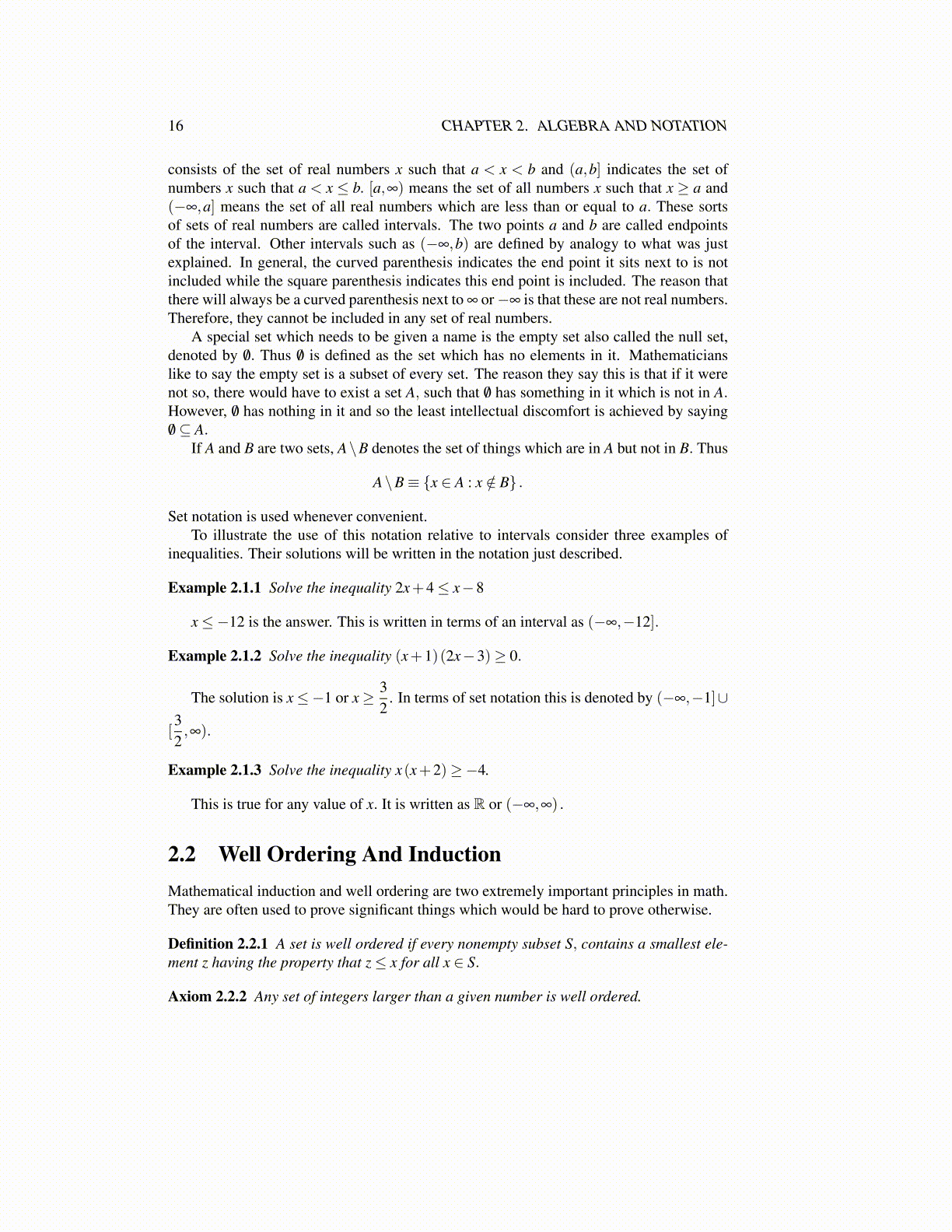
16 CHAPTER 2. ALGEBRA AND NOTATION
consists of the set of real numbers x such that a < x < b and (a,b] indicates the set ofnumbers x such that a < x ≤ b. [a,∞) means the set of all numbers x such that x ≥ a and(−∞,a] means the set of all real numbers which are less than or equal to a. These sortsof sets of real numbers are called intervals. The two points a and b are called endpointsof the interval. Other intervals such as (−∞,b) are defined by analogy to what was justexplained. In general, the curved parenthesis indicates the end point it sits next to is notincluded while the square parenthesis indicates this end point is included. The reason thatthere will always be a curved parenthesis next to ∞ or−∞ is that these are not real numbers.Therefore, they cannot be included in any set of real numbers.
A special set which needs to be given a name is the empty set also called the null set,denoted by /0. Thus /0 is defined as the set which has no elements in it. Mathematicianslike to say the empty set is a subset of every set. The reason they say this is that if it werenot so, there would have to exist a set A, such that /0 has something in it which is not in A.However, /0 has nothing in it and so the least intellectual discomfort is achieved by saying/0⊆ A.
If A and B are two sets, A\B denotes the set of things which are in A but not in B. Thus
A\B≡ {x ∈ A : x /∈ B} .
Set notation is used whenever convenient.To illustrate the use of this notation relative to intervals consider three examples of
inequalities. Their solutions will be written in the notation just described.
Example 2.1.1 Solve the inequality 2x+4≤ x−8
x≤−12 is the answer. This is written in terms of an interval as (−∞,−12].
Example 2.1.2 Solve the inequality (x+1)(2x−3)≥ 0.
The solution is x≤−1 or x≥ 32
. In terms of set notation this is denoted by (−∞,−1]∪
[32,∞).
Example 2.1.3 Solve the inequality x(x+2)≥−4.
This is true for any value of x. It is written as R or (−∞,∞) .
2.2 Well Ordering And InductionMathematical induction and well ordering are two extremely important principles in math.They are often used to prove significant things which would be hard to prove otherwise.
Definition 2.2.1 A set is well ordered if every nonempty subset S, contains a smallest ele-ment z having the property that z≤ x for all x ∈ S.
Axiom 2.2.2 Any set of integers larger than a given number is well ordered.